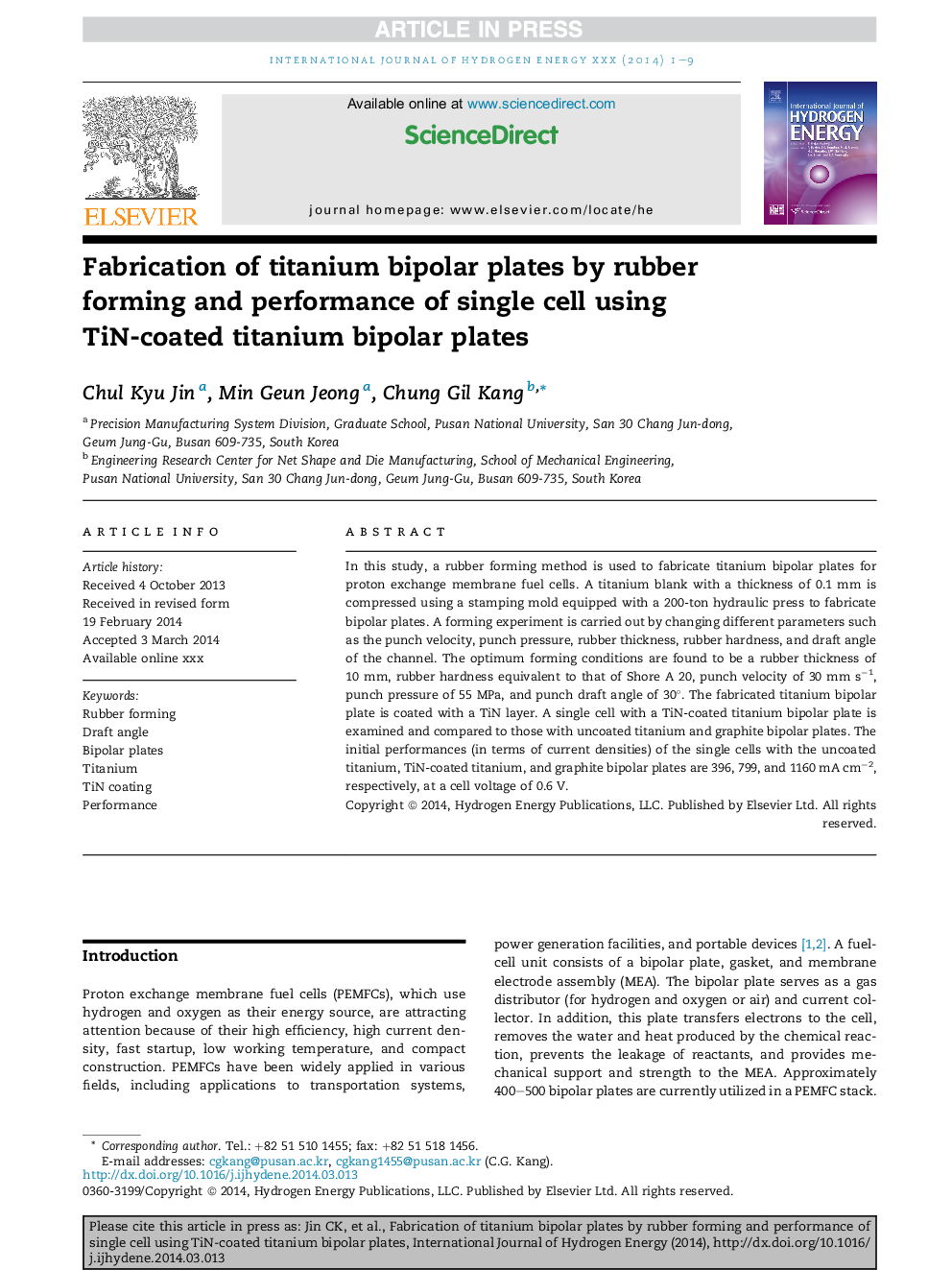| Article ID | Journal | Published Year | Pages | File Type |
|---|---|---|---|---|
| 7717161 | International Journal of Hydrogen Energy | 2014 | 9 Pages |
Abstract
In this study, a rubber forming method is used to fabricate titanium bipolar plates for proton exchange membrane fuel cells. A titanium blank with a thickness of 0.1 mm is compressed using a stamping mold equipped with a 200-ton hydraulic press to fabricate bipolar plates. A forming experiment is carried out by changing different parameters such as the punch velocity, punch pressure, rubber thickness, rubber hardness, and draft angle of the channel. The optimum forming conditions are found to be a rubber thickness of 10 mm, rubber hardness equivalent to that of Shore A 20, punch velocity of 30 mm sâ1, punch pressure of 55 MPa, and punch draft angle of 30°. The fabricated titanium bipolar plate is coated with a TiN layer. A single cell with a TiN-coated titanium bipolar plate is examined and compared to those with uncoated titanium and graphite bipolar plates. The initial performances (in terms of current densities) of the single cells with the uncoated titanium, TiN-coated titanium, and graphite bipolar plates are 396, 799, and 1160 mA cmâ2, respectively, at a cell voltage of 0.6 V.
Related Topics
Physical Sciences and Engineering
Chemistry
Electrochemistry
Authors
Chul Kyu Jin, Min Geun Jeong, Chung Gil Kang,
